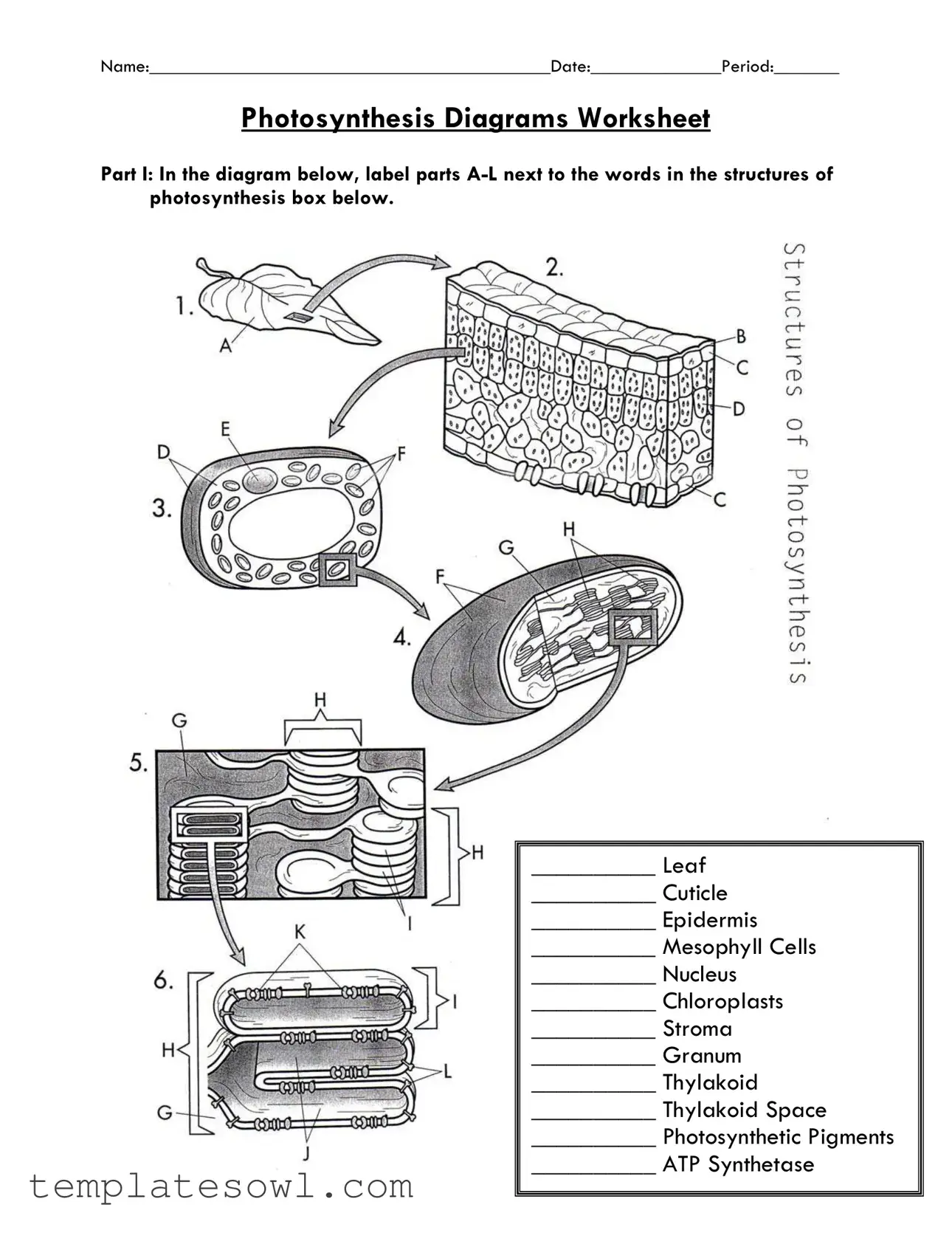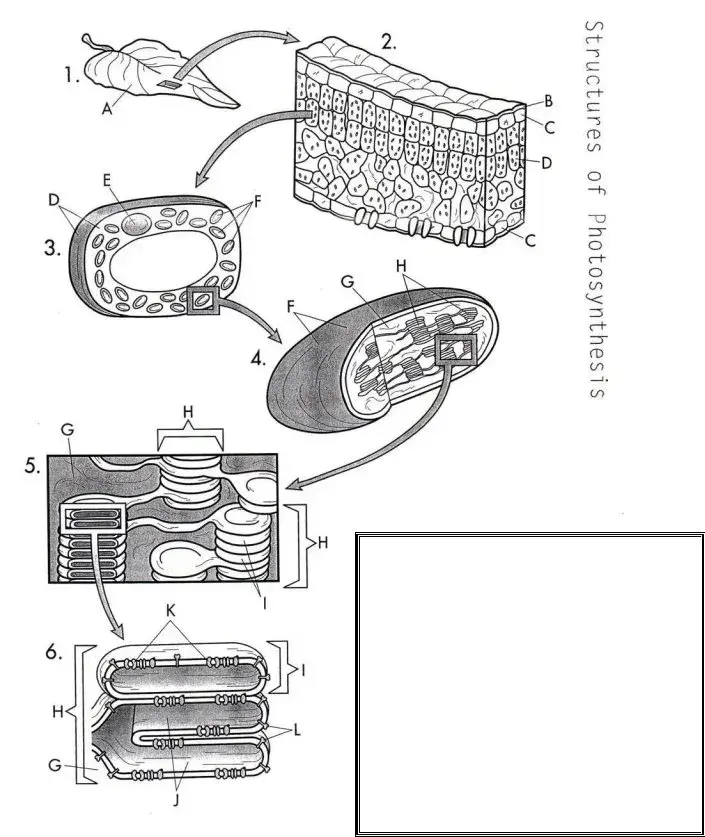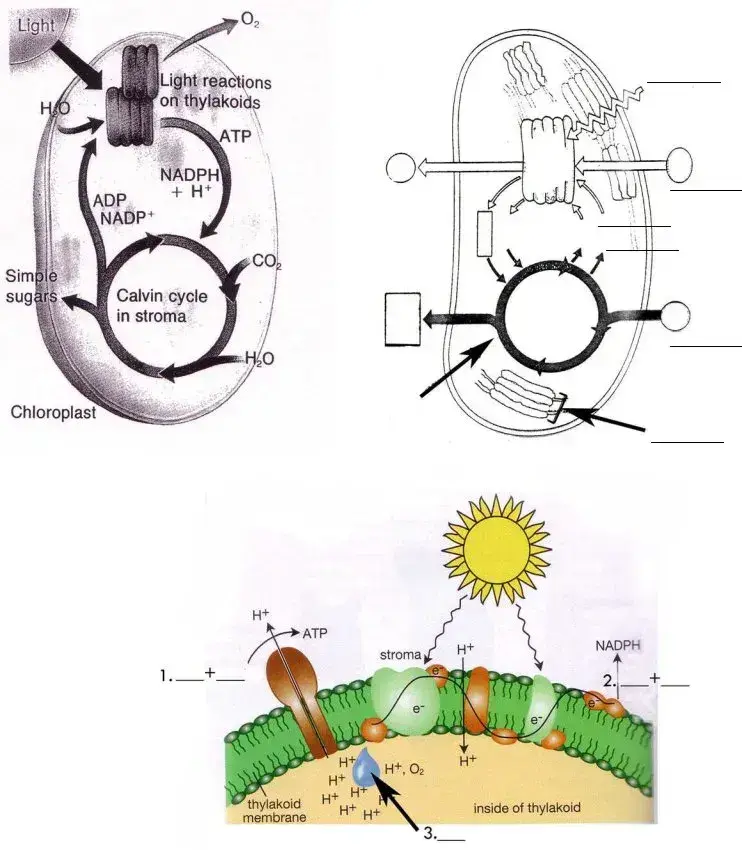What is the purpose of the Photosynthesis Diagrams Worksheet?
This worksheet aims to deepen the understanding of photosynthesis by visually engaging students with the key components involved in the process. By labeling various parts and structures, learners reinforce their knowledge, making it easier to remember and apply the concepts in future studies.
Who is this worksheet intended for?
The Photosynthesis Diagrams Worksheet is designed primarily for students studying biology, particularly those in middle school or high school. It can also be useful for anyone interested in learning about plant biology and the fundamental processes behind photosynthesis.
How should I complete Part I of the worksheet?
In Part I, you will label parts A-L of the provided diagram using the list of terms. Each term corresponds to a specific structure involved in photosynthesis, such as chloroplasts, thylakoids, and mesophyll cells. Take your time; ensuring accuracy will help you grasp the details of the photosynthesis process.
What do I need to focus on while labeling Diagram B in Part II?
When labeling Diagram B, refer back to Diagram A for guidance. This part encourages you to apply what you learned from the first diagram. It’s important to ensure that your labels are clear and correctly placed to depict the flow of processes in photosynthesis accurately.
Can you explain the significance of the structures labeled in Part I?
Each structure labeled in Part I plays a vital role in the photosynthesis process. For example, the chloroplasts house the components necessary for photosynthesis, while the stroma is where reactions occur. Understanding the function of each part strengthens your overall grasp of how plants convert light energy into chemical energy.
What should I label in Part III of the worksheet?
In Part III, you will be labeling three critical reactants: the substances that combine to form ATP, the reactants for NADPH, and the sources of hydrogen and oxygen. This part of the worksheet reinforces your understanding of the raw materials that plants use during photosynthesis, which is crucial for grasping the entire process.
What strategies can I use to ensure that I thoroughly understand the material?
To ensure a deep understanding, take the time to review your labeled diagrams once they are completed. Discuss the function of each labeled part with classmates or teachers. Additionally, you might want to conduct further research to explore how the labeled structures interact within the photosynthesis process.
Are there any resources available to help me better understand photosynthesis?
Yes, numerous textbooks, online resources, and videos can provide more in-depth information about photosynthesis and its components. Consider looking for visual aids, animations, and interactive diagrams that can bring the concepts to life. Engaging with diverse materials will enhance your comprehension of the subject.


